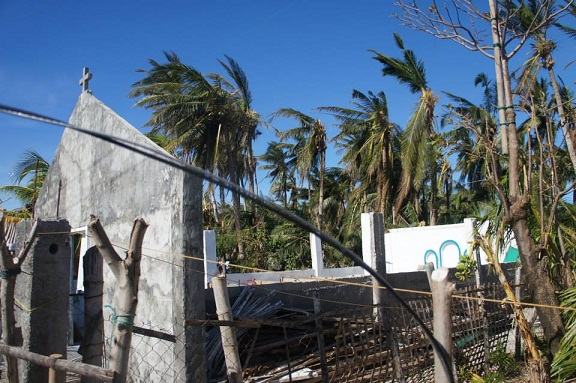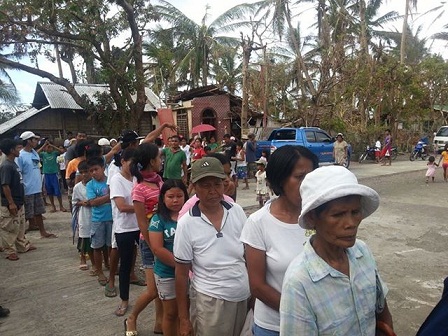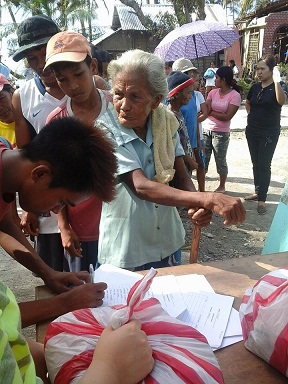By Alex C. de los Santos
Photos from Bangon Antique FB and Jun Tens

Antique province in the western side of Panay Island is one of the provinces in the Visayas that survived super typhoon Yolanda/Haiyan. Reported casualties and deaths from this province had been minimal, the reason perhaps that media coverage has not been as extensive as in Tacloban and Samar. The northern portion of the province from Bugasong town to Libertad and the islands of Caluya had been worse hit. Many people lost their homes, made mostly of light materials such as bamboo and nipa shingles.
“But while there are very few deaths and casualties, it doesn’t mean that we don’t need help. In fact, there should be more help for the living, but have no hous;es,” said Fr. Edione Febrero, director of the Diocesan Social Action Center – Antique (DSAC-Antique) that leads an extensive relief and rehabilitation efforts in the province. The Center coordinates relief operations in collaboration with other non-government, with their network of donors locally and abroad. At the time of this interview, Fr. Febrero is expecting a group of doctors from Hongkong.

Fr. Edione volunteers his observation that Antique was more prepared for Yolanda. “I think we have learned our lesson from Frank,” he said. “We have done parallel operations with the local disaster management council, and I guess we have better preparation in anticipation of the super typhoon, which also explains why our casualty count is much lower compared to that of Typhoon Frank.”
Antique was one of the worst hit by Typhoon Frank, for which the province was caught ill-prepared in 2008. This time, however, storm signals have been properly disseminated, and the public had been warned about the impending threat. People in the coastal communities were advised not to set sail. Antique is a coastal province, and many residents are subsistence fishermen.

For now, relief operations are undertaken by various non-government organizations and the private sector. Aside from DSAC-Antique, Gawad Kalinga, Society of St. Vincent de Paul (SSVP), DDL-Caltex and Krisander Groups, student organizations from St. Anthony’s College and the University of Antique have mobilized themselves for relief operations.
The Lin-ay kang Antique Association, the organization of winners of the province’s annual beauty pageant, through their president Rubbie Riza Estaris, winner in 2005, has also solicited relief goods from their members in Manila and abroad, and are scheduled to distribute this weekend.
Meanwhile, the Provincial Government has set up a relief goods receiving and packing center at the Evelio B. Javier Memorial Gym. Volunteer students and employees have been tapped to pack the relief goods. These are sent out for distribution to victims through the local government units.
After the relief operations, rehabilitation efforts will be done in the affected areas. Fr. Febrero reports that they have already identified the needs of the residents in the areas and his group shall try to address their specific needs during the rehabilitation phase. In Caluya, for example, more than 4,000 seaweed farmers had been affected. Not only are most of them homeless, but also, almost all of their equipment and gears are gone. Basic for their seaweed farms are nylon twines, which they use to grow tambalang or seaweed.
“We ordered 150 rolls of nylon twine, but we got only 148. There is a lack of supply, yet we need more,” shares Fr. Edione. After the relief operations, he asks donors to give cash that can be used to address the victims’ needs. “We cannot forever give dole-outs. We have to help them get back to their livelihood, and rebuild their lives,” he stressed.
Fr. Edione also notes that aside from the foreign donors who want to help, most of their funding come in through the efforts of Antiquenos abroad. While Antique has not gotten enough attention from the national government and media, the Antiquenos, instead of whining, try to help themselves.
(VERA Files is put out by veteran journalists taking a deeper look at current issues. Vera is Latin for “true.”)
Kawawa din pala probinsya mo, Ellen.